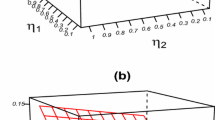Abstract
Ranked set sampling (RSS) is a sampling approach that leads to improved statistical inference in situations where the units to be sampled can be ranked (either through some subjective judgment or via the use of an auxiliary variable) relative to each other prior to formal measurement. It has the most promise for leading to improved methodology in situations where ranking of the items to be sampled can be carried out relatively easily and cheaply compared to the effort and expense required for actual quantification of the characteristic of interest. Although the theoretical benefits of RSS in estimation and statistical inference have been extensively demonstrated in the literature, the methodology has not yet been widely adopted by practitioners. The aim of this study is to use a crop production dataset from the United States Department of Agriculture to demonstrate the practical benefits of RSS relative to the more commonly used simple random sampling in estimation of the mean and median of a population. The results of our study provide clear evidence that the use of RSS can lead to substantial gains in precision of estimation for both of these situations.
Similar content being viewed by others
References
Barnett, V., and Moore, K. (1997), “Best Linear Unbiased Estimates in Ranked-Set Sampling with Particular Reference to Imperfect Ordering,” Journal of Applied Statistics, 24, 697–710.
Bohn, L. L. (1996), “A Review of Nonparametric Ranked-Set Sampling Methodology,” Communications in Statistics—Theory and Methods, 25, 2675–2685.
Chen, H., Stasny, E. A., and Wolfe, D. A. (2003), “Ranked Set Sampling for Estimating a Population Proportion: How to Improve the Ranking,” Technical Report Number 703, Department of Statistics, Ohio State University.
Cobby, J. M., Ridout, M. S., Bassett, P. J., and Large, R. V. (1985), “An Investigation into the Use of Ranked Set Sampling on Grass and Grass-Clover Swards,” Grass and Forage Science, 40, 257–263.
Dell, T. R., and Clutter, J. L. (1972), “Ranked Set Sampling Theory with Order Statistics Background,” Biometrics, 28, 545–555.
Iwig, W. C. (1993), “The National Agricultural Statistics Service County Estimates Program,” in Indirect Estimators in Federal Programs, Statistical Policy Working Paper 21. Report of the Federal Committee on Statistical Methodology, Subcommittee on Small Area Estimation, Washington, DC, 7.1–7.15.
McIntyre, G. A. (1952), “A Method of Unbiased Selective Sampling, Using Ranked Sets,” Australian Journal of Agricultural Research, 3, 385–390.
Ohio Department of Agriculture (1993), Ohio Department of Agriculture 1992 Annual Report and Statistics, Columbus, OH: Author.
Patil, G. P. (1995), “Editorial: Ranked Set Sampling,” Environmental and Ecological Statistics, 2, 271–285.
Patil, G. P., Sinha, A. K., and Taillie, C. (1994), “Ranked Set Sampling,” in Handbook of Statistics Volume 12: Environmental Statistics, eds. G. P. Patil and C. R. Rao, New York: Elsevier Science, pp. 167–200.
Stokes, S. L. (1980), “Estimation of Variance Using Judgment Ordered Ranked Set Samples,” Biometrics, 36, 35–42.
Stokes, S. L., and Sager, T. W. (1988), “Characterization of a Ranked-Set Sample with Application to Estimating Distribution Functions,” Journal of the American Statistical Association, 83, 374–381.
Author information
Authors and Affiliations
Rights and permissions
About this article
Cite this article
Husby, C.E., Stasny, E.A. & Wolfe, D.A. An application of ranked set sampling for mean and median estimation using USDA crop production data. JABES 10, 354–373 (2005). https://doi.org/10.1198/108571105X58234
Received:
Revised:
Issue Date:
DOI: https://doi.org/10.1198/108571105X58234




